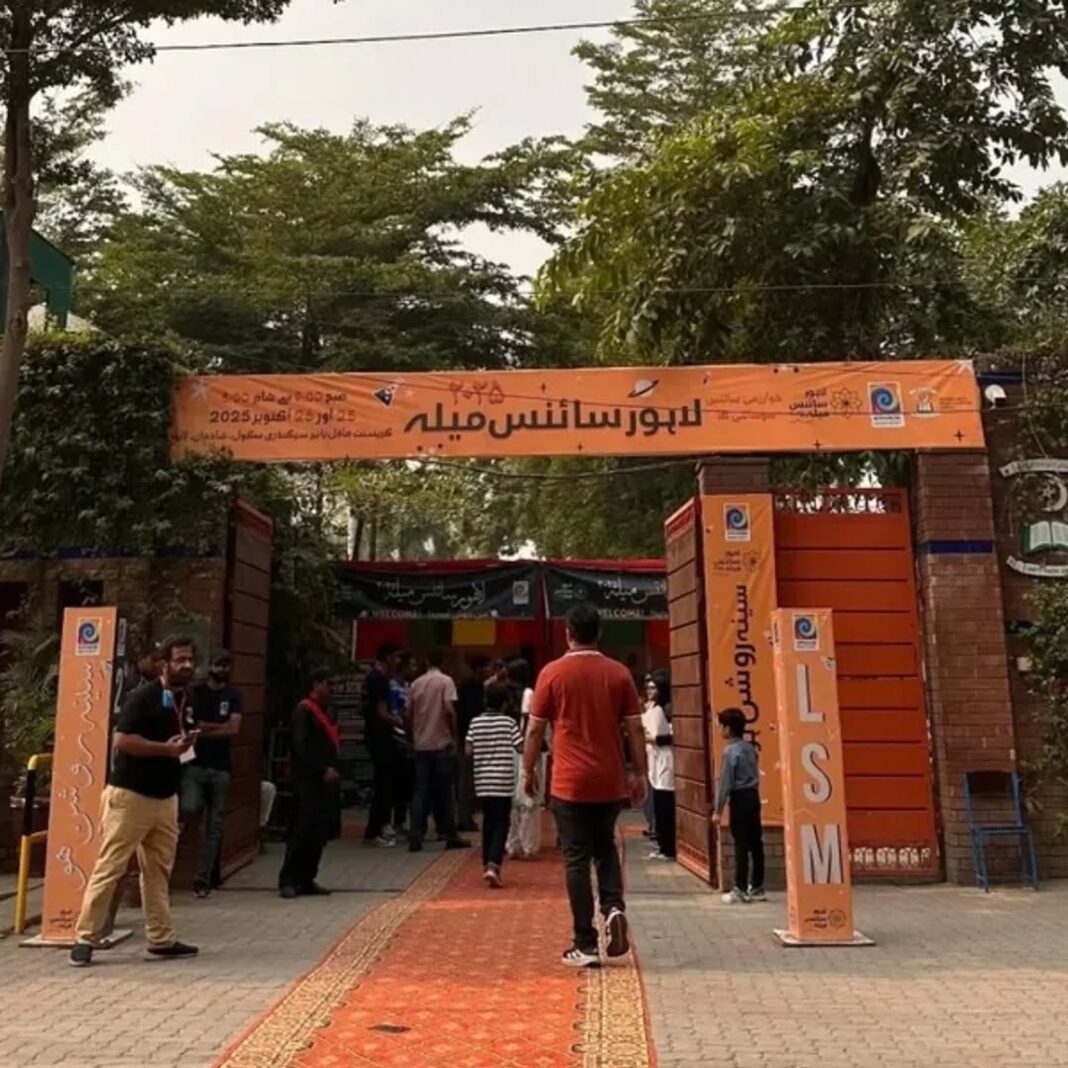“What we know is a drop, what we don’t know is an ocean.” You could sense the ocean the minute you crossed the gates of Crescent Model Higher Secondary School, Shadman in Lahore. There was an air of excitement at the Lahore Science Mela; children with curiosity in their minds, parents with their cameras, and volunteers running here and there among the colorful stalls were all united by the same factor: “curiosity”.
Khwarizmi Science Society (KSS) transformed this school into a land of exploration on 25-26 October 2025. Out of smoldering chemical combinations to robots on command, from fossils that were older than time to the telescopes staring up at the stars, all this talked of the same thing: curiosity.
The Strength of Learning through Practice
Science is not in a textbook. It’s the thrill of asking “why?” and finding your own answer. It is what Lahore Science Mela has been celebrating.
Children who had only read pictures in books had the opportunity to see a real specimen, observe a real experiment, and ask questions. A small girl, before one of the model volcanoes, said in a low voice, “So that is how volcanoes work!” Her teacher glimpsed the smile. These glimpses reflect that a child has just been opened up in her mind.
To most underprivileged students, the mela was not just a field trip, but a once-in-a-lifetime experience. They eventually got the appearances of photosynthesis, magnetism, and chemical reactions. LSM brought science not only out of classrooms but also into life, demonstrating that all children, regardless of their background, need to learn through wonder.
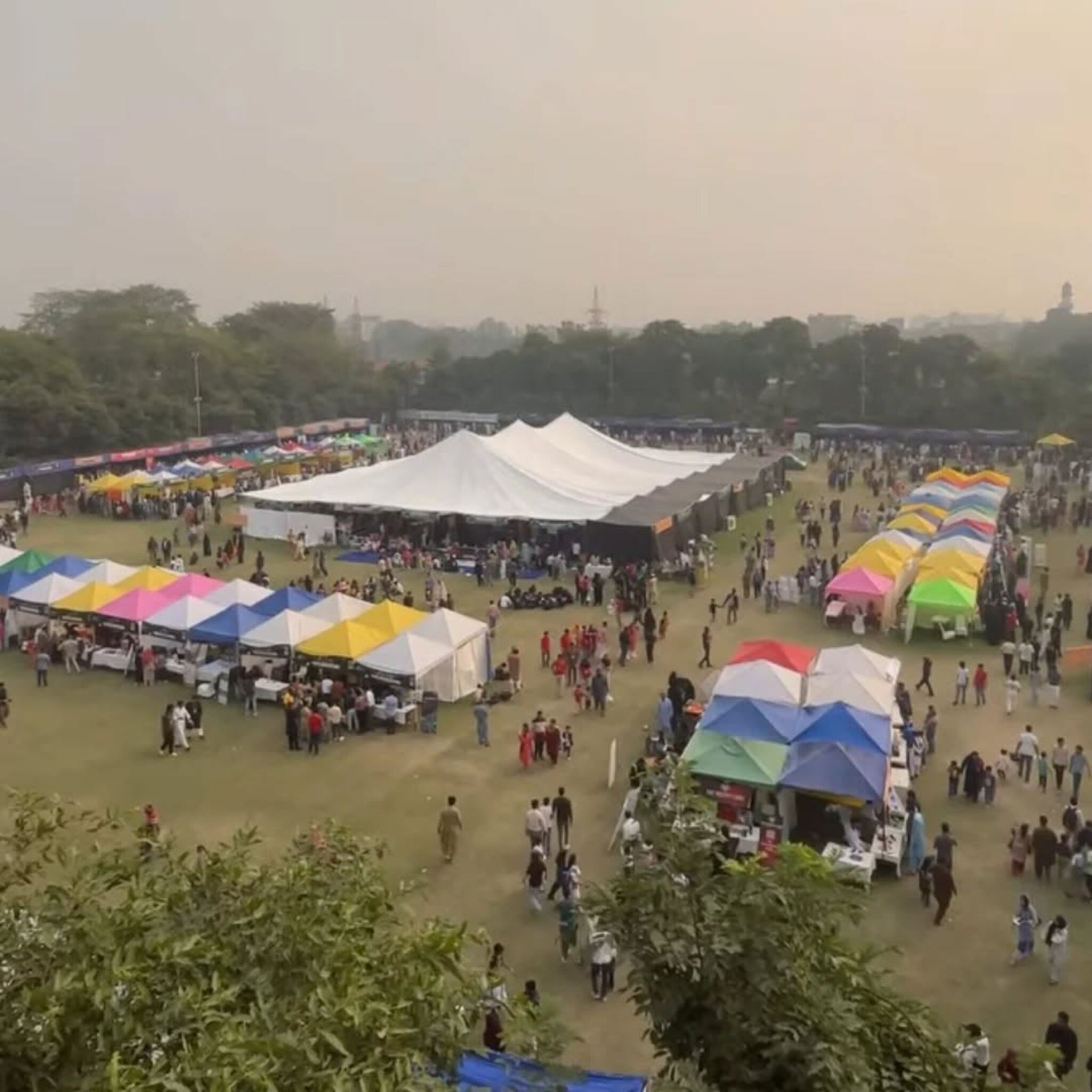
Science Everywhere: Life, Space, Technology, Matter, and Energy
The mela was split into several corners, representing a mini-world of science to explore.
There was the buzz of the Life Corner. Students were flocking to biology exhibits, looking through microscopes and fossils. The GCU Stephenson Natural History Museum displayed preserved specimens and evolution artifacts, and narrated their stories. The Pakistan Museum of Natural History presented a geological element with sparkling rocks and ancient fossils. While the Pakistan Meteorological Department demonstrated how weather can be predicted with the help of satellites and sensors, and how something as simple as a rain prediction becomes a tale of science and information.
At the KSS Planetarium, located in the dome of Khalai Kachwa, visitors could lie back and look up at the galaxies, at the ceiling. The planets circled, the stars burst, and the Milky Way stretched into unending space above. It was a spectacular lesson that science can reduce us to insignificance in the universe, and at the same time, provide us with immense power.
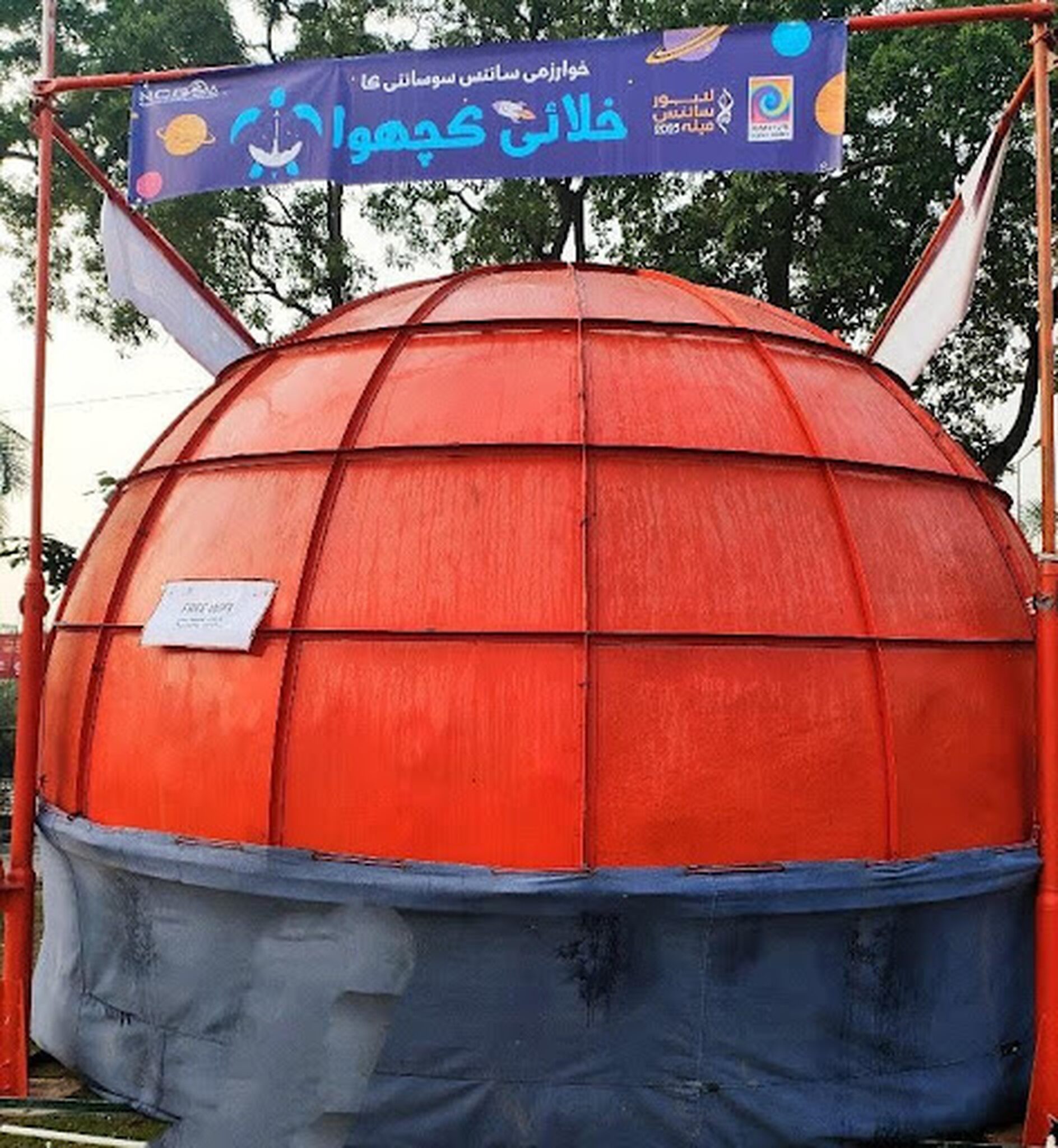
Movement was present in the Technology Section. The wheels of the robots were rolling on tables, mechanical hands were waving, and blinking lights. UET Science Society astonished visitors with machines created by students. LearnOBots organized exciting hands-on activities with DIY kits and educational robots. Robonex attracted people with interactive demonstrations of the robots that combined learning and entertainment.
The training on how to identify internet-based scams and protect information became interactive when the team of Sadaqat Ali created mini-games to educate people about the subject. In the meantime, the Punjab Safe City Authority has impressed families with the opportunities of AI to make cities safer, both by road monitoring and identifying emergencies.
The buzz in the Matter and Energy Zone was literally electrical. Visitors gasped as superconducting magnets made small objects float mid-air, defying gravity. Green chemistry exhibitions were used to demonstrate how simple choices in materials would save our world. Waste management, renewable energy, and a green car, designated to be fuel-efficient, were also exhibited.
In the “Shooting Stars” exhibit, there was a telescope that was facing up to the sky, with the young astronomers showing people their constellations. A couple of minutes later, the sky of Lahore turned into a schoolroom, and the stars were all educators.
Our National Science Treasures!
No corner was prouder than the one that showed the scientific treasures of Pakistan. The Pakistan Atomic Energy Commission displayed its progress in nuclear medicine and nuclear energy generation, where complex scientific research was demonstrated in easy and understandable forms. The National Centre of Physics conducted some interesting live experiments that transformed invisible theories into actual phenomena.
What fascinated visitors more was the natural history and meteorological exhibits, the story of the creation of the Earth through rock formations, and the instruments used in weather prediction that save lives. It reminded us that science is not alien; quite on the contrary, it exists here, on our earth, sky, and in us.
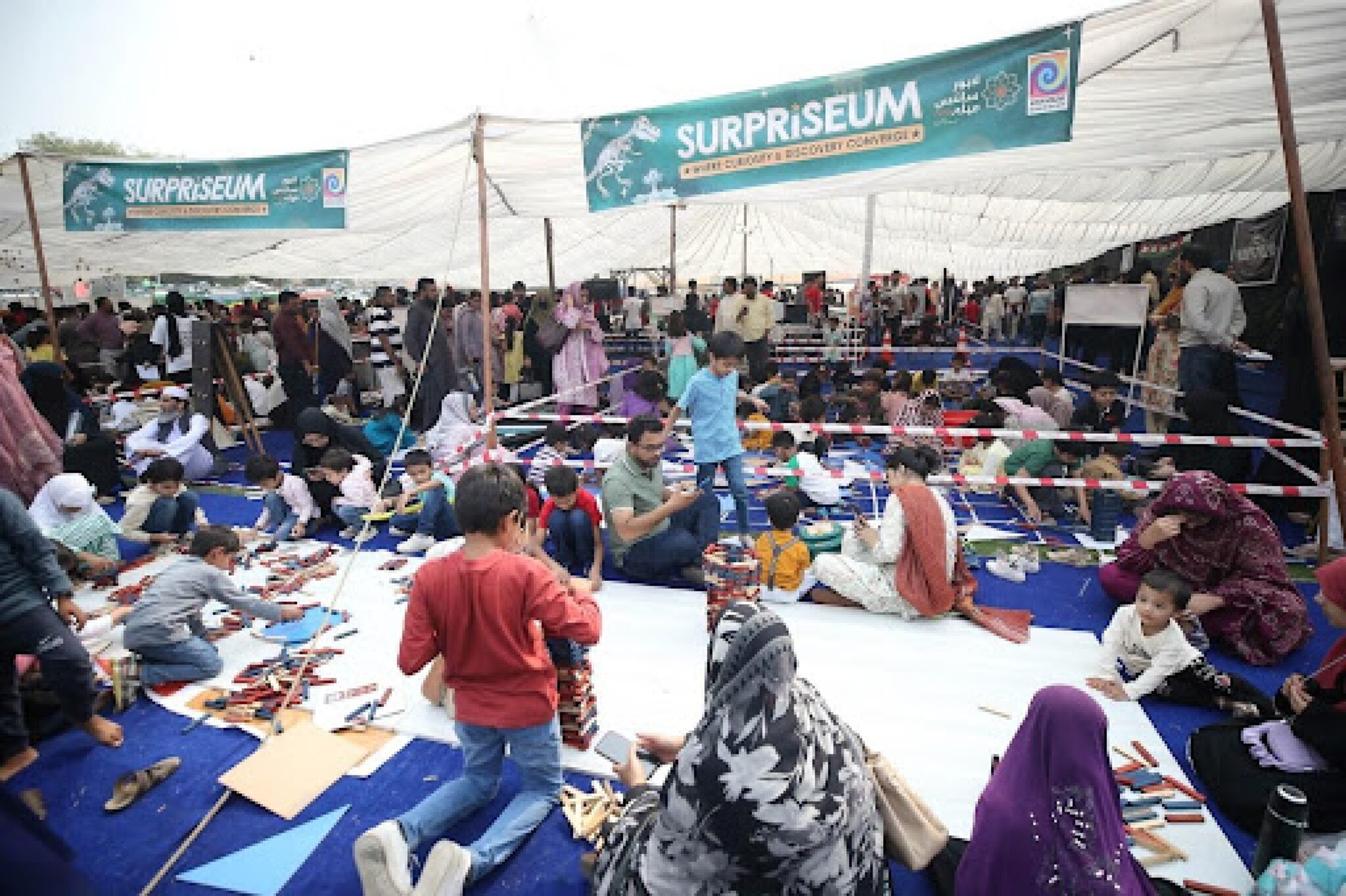
Surpriseum
The very core of the mela Surpriseum (Hairat Ghar) was the place where science was almost pure magic. The hall was full of shining eyes, crackling noises, and the rapturous sound of discovery.
Children bent over tables to see how bubbling chemicals turned color, marbles into new patterns, and light created a rainbow. KSS volunteers demonstrated many phenomena, like optical illusions, sound waves, and static electricity. To the wandering children, the volunteer smiled and said, “That’s science, not magic, but it is like magic, and it feels that way, doesn’t it?”
This was a corner that was a reminder that curiosity is powerful. When science is demonstrated joyfully, all of the children become explorers.
Indoor Workshops
In indoor workshop sessions, students were assisted alongside scientists, artists, and engineers to discover extraordinary ideas with easy experiments. Organizations like Space Research Centre (SRC), Space Education Research Lab (SERL), and SUPARCO explained space stations. Students created models of small satellites, read about rocket launch, and were briefed about how scientists study the universe.
Hast-o-Neest Institute of Traditional Studies & Arts provided a touch of creativity, where Islamic geometry, calligraphy were shown, and how architecture blends art with science. Numbers were turned into puzzles, not problems that the LUMS Maths Circle made them feel. The Precision Medicine Lab presented the visitors with the magic of genetics and contemporary healthcare.
These were not lectures at all, but adventures. Students felt, constructed, experimented, and studied, learning how to become a scientist in the future.
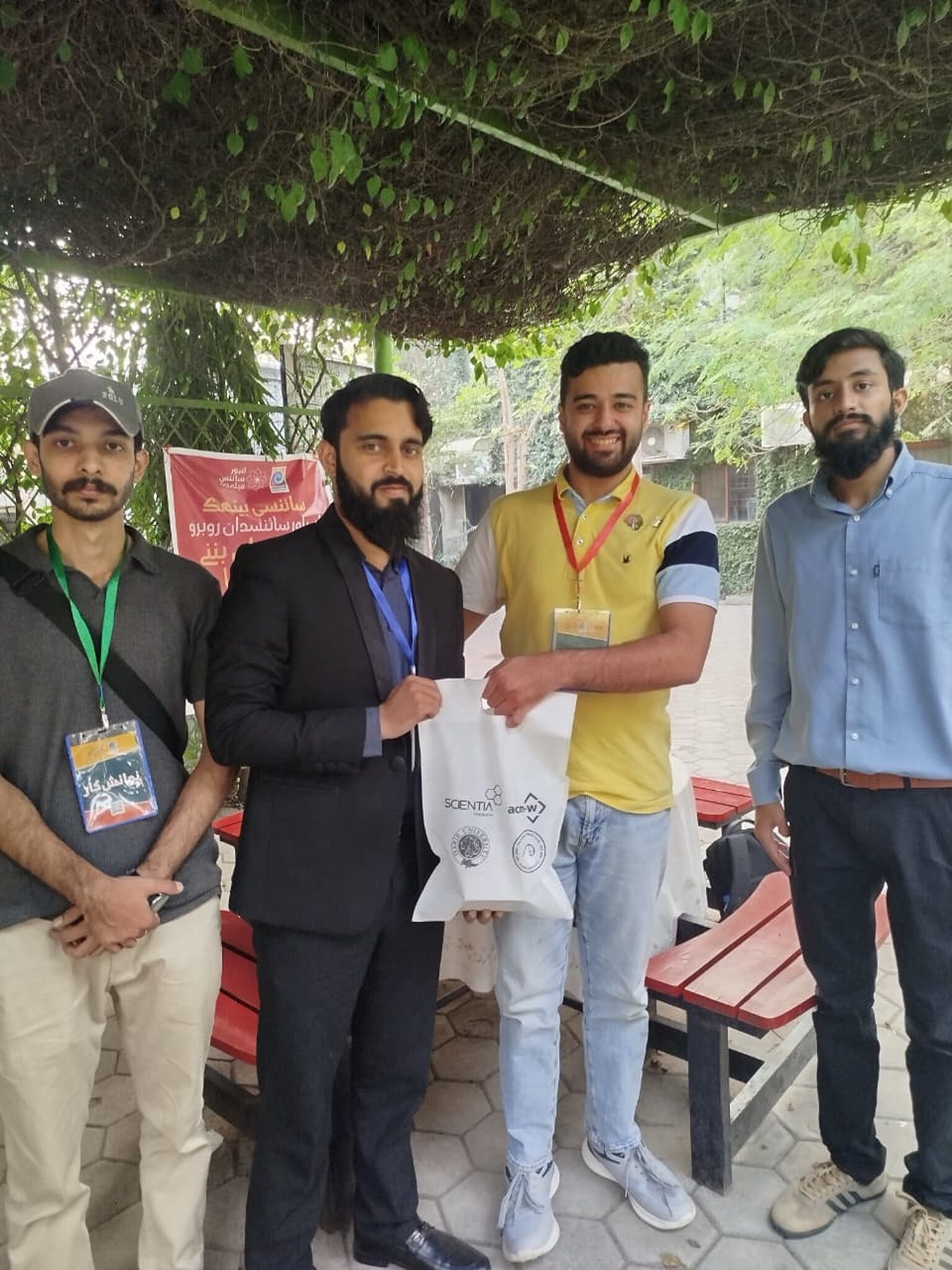
Scienci Bethak
On one side of the mela, there was a quieter place, where the thinkers were invited to sit together, the Scienci Bethak. Researchers, learners, and teachers gathered to discuss artificial intelligence and robotics, neuroscience, and philosophy, among others.
This bethak was open and friendly as opposed to formal conferences. Anyone could ask questions. An adolescent who simply wants to learn more about space would be able to speak to a professional. An artist might have ideas about creativity and science. It was a spot to which disciplines blended, where ideas were as freely floating as tea cups were being filled.
Here, Scientia’s team member Hifz Ur Rehman had a meaningful conversation with the Palestinian scientist, Abdulrehman Abou Dahesh, who travelled from the US to take part in the mela. The conversation will be published soon on Scientia.
Auditorium Sessions
Science was in the air, in the great auditorium. Sessions on architecture, environmental science, geography, and historical preservation were conducted by experts based all over Pakistan. Each talk showed the extent to which science influences our world, whether it is the air we breathe or the buildings we inhabit.
The best part? The meetings were participatory. Crowds requested clarifications, discussed concepts. To young visitors said that it was inspiring to listen to scientists speak about the things they love doing. It demonstrated that science is not remote, but it is human, imaginative, and close to everyday life.
Equity and Learning
The Lahore Science Mela was not only a festival it was also a movement for equal education. During two days, people could enjoy free access to expensive and rare scientific equipment. Government school students were standing neck to neck with every student of a private school; their curiosity united them.
It was very touching to see children with telescopes, fossils, and mixing chemicals in their hands. It revealed that learning prospers everywhere when there is free sharing of knowledge. The mela made it clear to everybody that science was not a privilege at all, but a right.
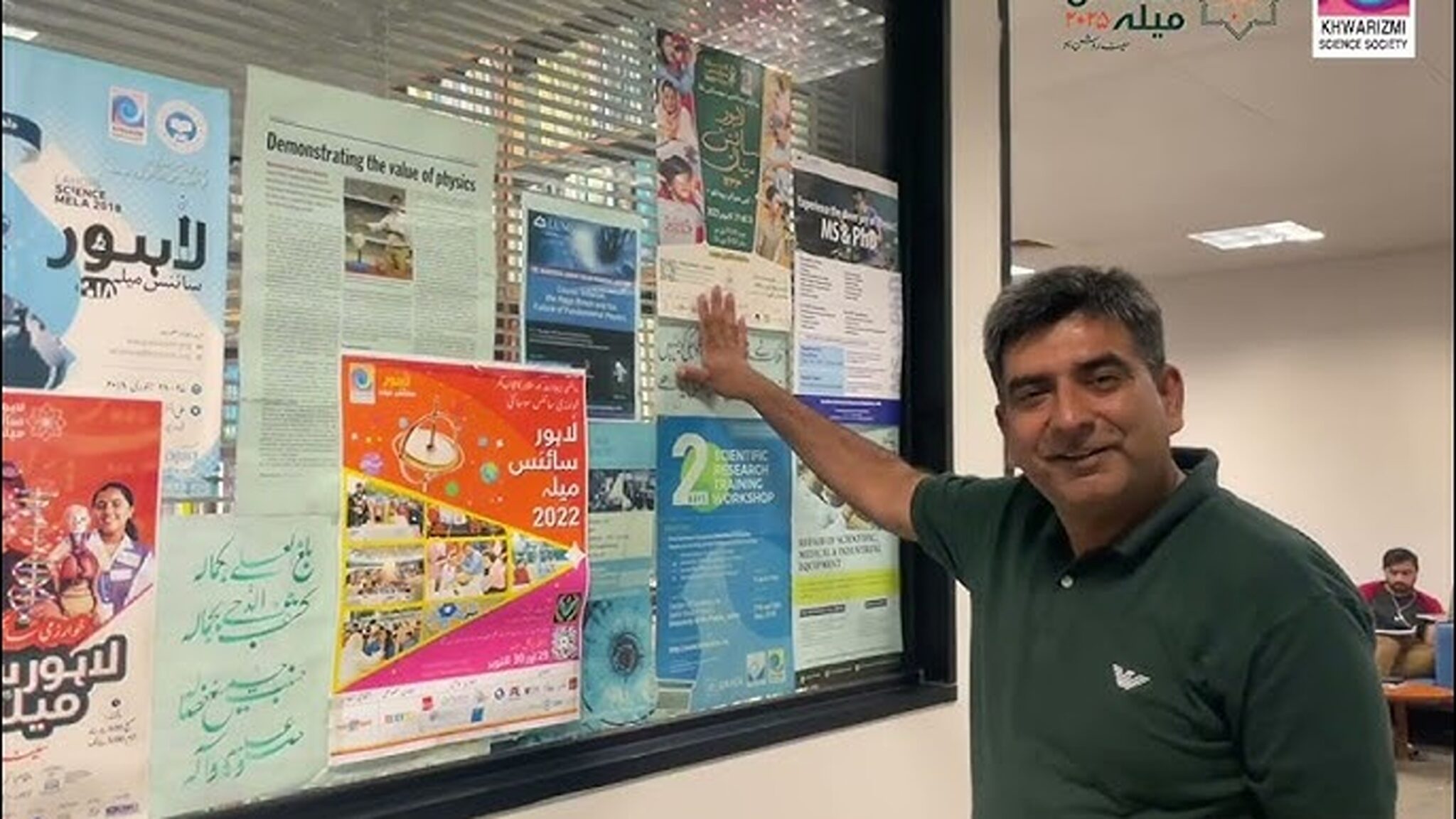
The Reason why you should not miss the Mela Next Year!
If you have not been there, promise yourself now that you will go to the Lahore Science Mela next year. It is no ordinary exhibition; it is the place where children can find their future profession. It is the place where parents understand that learning can be fun. It is where the teachers find the interest back in the eyes of their students.
The mela shows that science is not a subject; it is a party. You do not observe experiments, you experience them. You do not simply hear lectures, you live them.
Then next year, invite your friends, your family, and your questions. Wander through the halls of light, sound, and exploration. Talk to the robots. Look through the telescopes. Make something with your hands. You will not only know more, you will wonder more when you leave Lahore Science Mela. And that, truly, is where every great discovery begins!
More From the Author: Blood Doesn’t Lie: How DNA and Serology Are Transforming the Legal Systems Worldwide
Anam Ilyas holds an MS Forensic Chemistry from Government College University, Lahore. She is a science enthusiast with a great love for explaining complex topics in simpler ways. She aims to bridge the gap between scientific research and the general public through her writing. When she is not writing or talking, you can find her lost in a book or making ideas come alive through her drawings.
